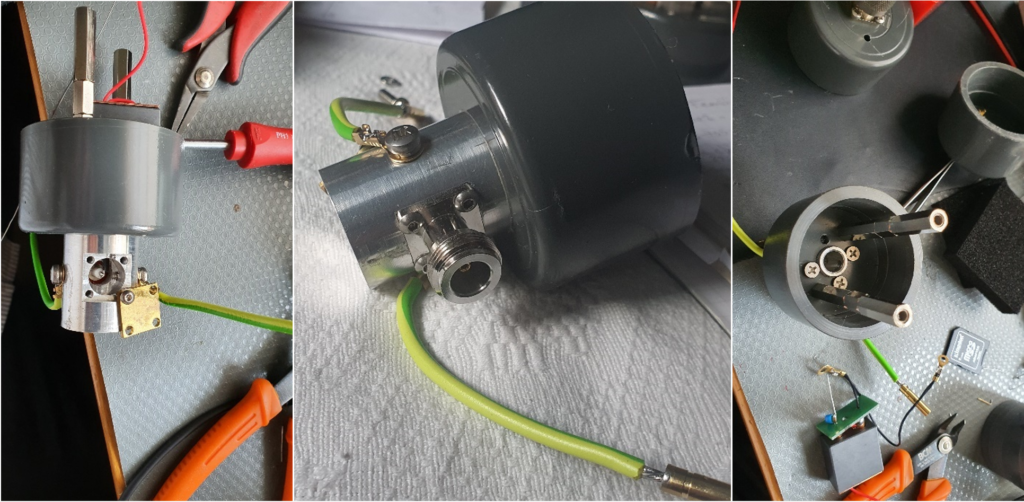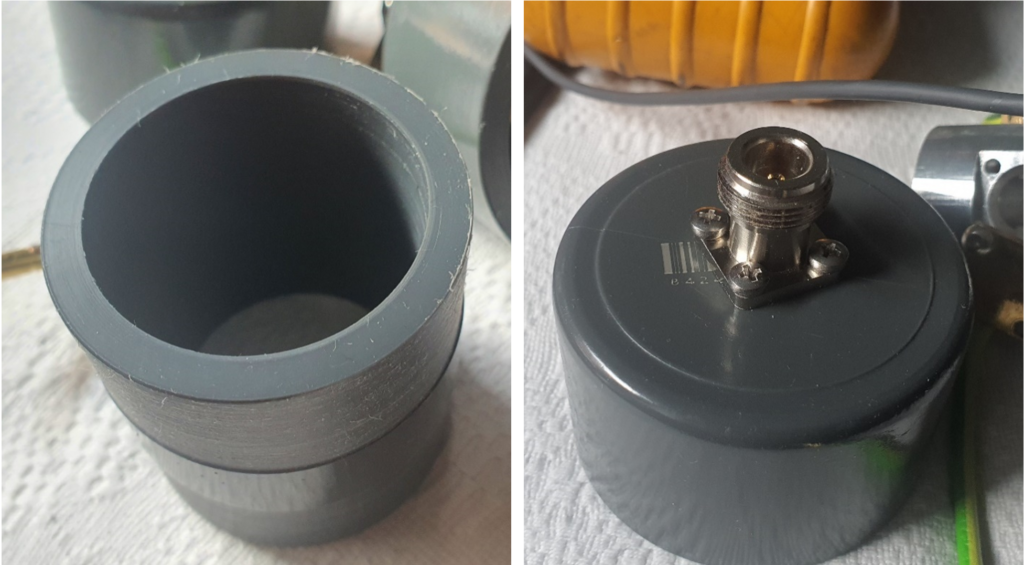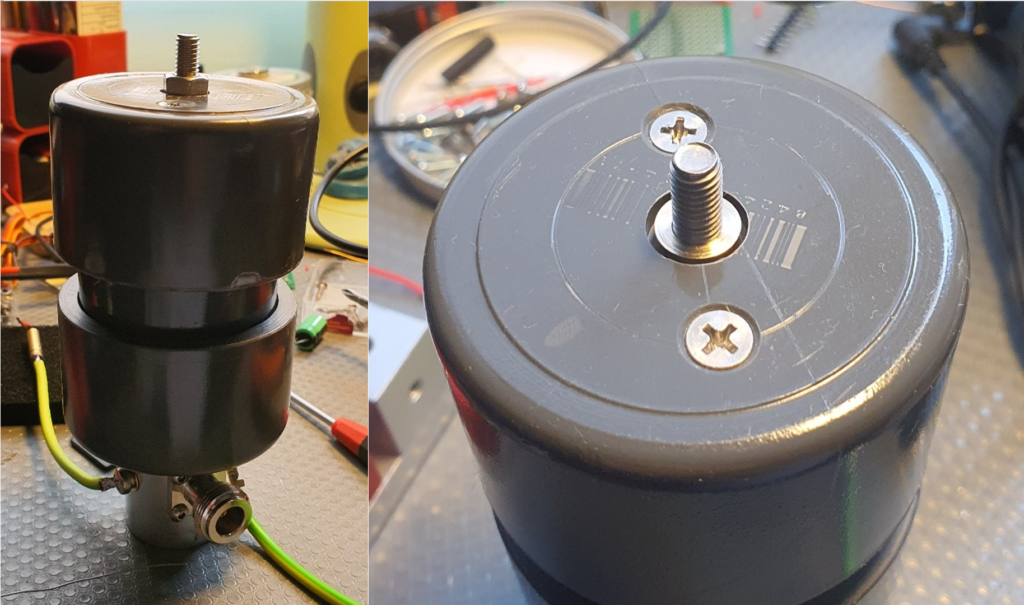In a previous post (https://ea4hcn.es/2024/07/08/unravelling-chameleon-and-alpha-tactical-antennas/), it was reported the research on the estructure of Alpha and Chameleon matching devices, and how a pair of autotransformers to their design were built. However, to be useable in practice, the matching autotransformer shall be placed in a robust enclosure, strong enough to bear the weight of the whip, and to resist some lateral forces.
If a saleable product had to be built, the base would be provided with a M8 or M10 machine screw for the whip, and a 3/8-16 UNC thread for the base. But, for experimenting, it is enough using M6 and 1/4 -20 UNC.
The one implemented borrows ideas from both Alpha and Chameleon. It is built from European PVC pipe fittings, with a base machined in 7075 alloy for the connector. Personally, I dislike “UHF” PL-259 connectors. So, I installed a N base, with a N male to BNC female adaptor for speeding up test cables connection and disconnection.
Several iterations were produced. The final one, dubbed AutoT 6.25, has the following schematics:

Figure 9: AutoT 6.25 UNUN schematic.
The main difference with Alpha and Chameleon’s devices is the addition of a 310 nF capacitor in series with the connection to the transceiver. Its purpose is avoiding a DC short to ground. This is a potential issue if DC current is supplied through the antenna cable (using a bias tee). Low ESR C0G capacitors from TDK were used, 3×100 nF in parallel with 10 nF (C0G capacitors have a 0.1% loss tangent, while cheaper X7R material may have 25 times that value).

Figure 10: Enclosure base, including N connector
A couple of variants were produced for the top section. Initially, it was used a robust N base for the antenna.

Figure 11: Enclosure mid and top components.
Later, it was replaced by a stainless steel M6 stud (actually a M6 machine screw), first held in place with a hex nut and later with a flush cylindrical nut.

Figure 12: Enclosure top section with M6 stud.
Finally, a pair of 2.5 mm2 wire stubs, 10 cm long, with 3.5 mm female banana sockets at their ends, were attached to the base, for a quick counterpoise connection / disconnection.

About the author